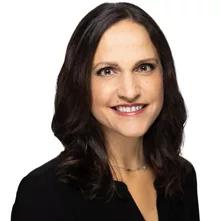Sometimes, the power of the written word can greatly influence one’s path in life. For Philip L. French, PE, FASPE, and former American Society of Plumbing Engineers (ASPE) president, his interest in plumbing engineering started with a textbook authored by Harold E. Babbitt, a professor at the University of Illinois, that he used in his first year of college.
“The entire book was based on plumbing engineering,” recalls French. “Back then, common knowledge seemed to imply that ‘anyone could do plumbing.’ This book seemed to challenge that attitude.”
French started his career in 1955 as a draftsman in the mechanical department at an architectural engineering firm before moving to Robson & Woese, Inc., Consulting Engineers in 1961, where he was assigned to the plumbing department. He became head of the department in 1970, a stockholder in 1980, and elected chairman of the board in 1990. He retired in 2001 but has continued to be an active member of ASPE.
Always hungry for knowledge, French was in search of an organization supporting the plumbing engineering profession. In the early 1960s, he discovered a four-page section of a magazine called TAPE (The American Plumbing Engineer) dedicated to the plumbing engineer, which was created by the founders of ASPE. That initial four-page insert ultimately became a standalone publication called Plumbing Engineer in 1973.
“The information I was looking for was not available in one place,” says French. “Today, we have design manuals and many technical publications (including Plumbing Engineer) available to us, especially as a result of the ever-growing ASPE. We are fortunate to have so many plumbing engineers willing to share their experiences.”
He ultimately joined ASPE in January 1968 and attributes his participation as key to furthering his career and education in the plumbing engineering profession. At the local level, he co-founded two chapters — Upstate (now Buffalo-Niagara) and Central New York.
French attended his first ASPE Convention in 1972 and became a member of ASPE’s board of directors in 1976. Over the years, he served three terms as membership vice president, one term as legislative vice president and two terms as ASPE president (1984 and 1988).
“ASPE provided me the information I was looking for,” recalls French. “When I became involved nationally and got involved in what information we could provide people, it made me grow. More importantly, I was exposed to members such as Donald Dickerson and Edward Saltzberg, who encouraged me and gave me the drive I needed. It was also helpful to have the support of my wife, Irene.”
French served on the first Certification Committee, tasked with providing a credential to recognize the plumbing designer who, for whatever reason, did not pursue registration as a professional engineer. The original designation was Certified in Plumbing Engineering,” which was changed to Certified in Plumbing Design. He served as the committee chairman for 25 years. He also served as chairman of ASPE’s College of Fellows Committee.
Developing relationships and ongoing education are essential to be proficient in your profession; involvement in an organization such as ASPE is paramount in one’s development, notes French.
It was during an ASPE convention when Phil French first met Tom Brown, the current chairman of the board of PHCPPros (formerly TMB Publishing), and then salesman and publisher of Plumbing Engineer — the magazine originally started by ASPE but ultimately taken over by Brown. Over the years, French and Brown became friends and that relationship continues.
Currently, Plumbing Engineer is the only publication dedicated to plumbing engineers and specifiers that appears both in print form and as an online digital edition. As for French, he prefers to read our publication in print.
“Having that magazine in front of you, where you can read engineering-related articles pertaining to the industry, is essential,” says French. “I would rather have a copy of the Plumbing Engineer magazine on my desk that I can read at my convenience. I am old school!”
The magazine also provides exposure to more than 24,000 people with each issue and covers the entire plumbing industry. This is most certainly a plus for the plumbing engineering profession.






